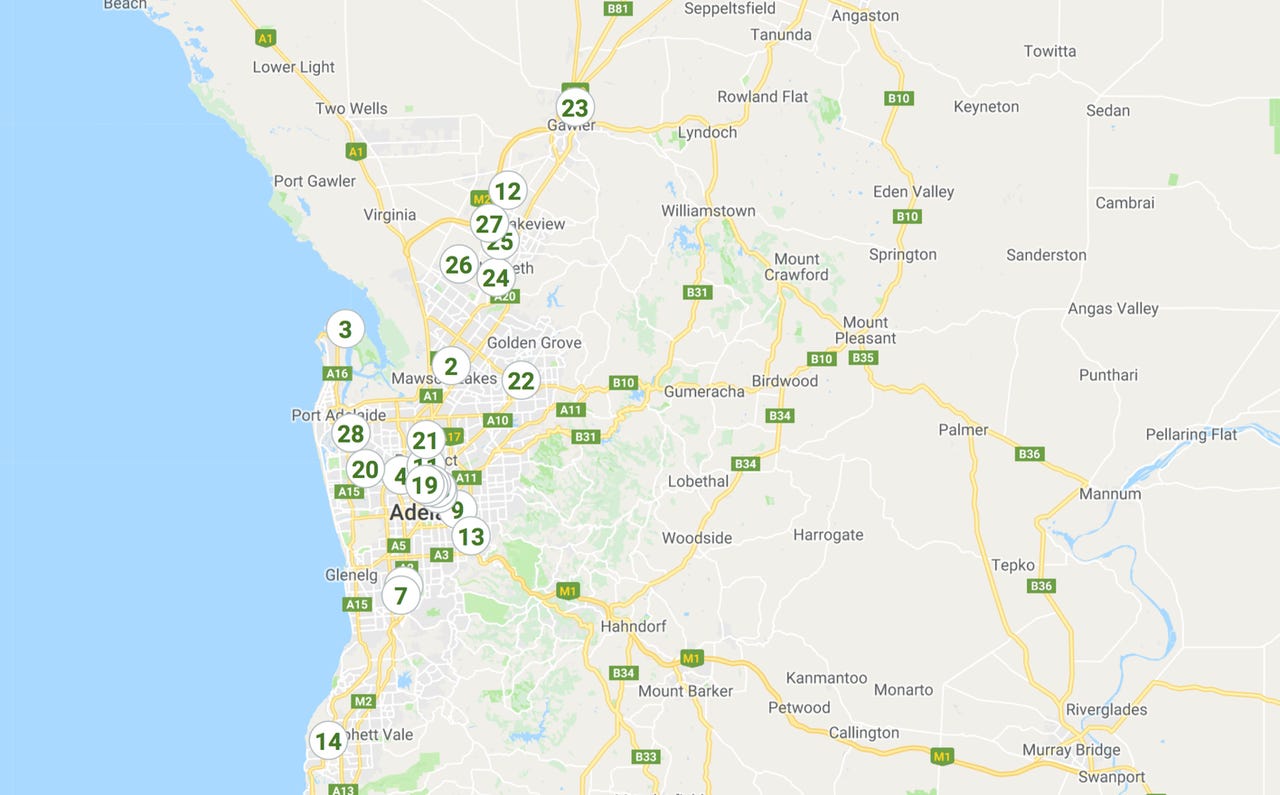South Australia's GigCity plan is not what it seems

Hardcore fibre fundamentalists will doubtless see Tuesday's announcement by the South Australian government as a dream come true. Gigabit fibre to the premises (FttP) broadband, and cheaper than the National Broadband Network. Hurrah!
Except it's not quite that.
What we actually have is nothing more than a two-page press release outlining a broad intention -- a press release from the Australian Labor Party (ALP), the party currently in government, in the lead-up to an election on March 17.
We need to parse this very carefully, with more than a few grains of salt.
What's actually on offer is an expansion of the state's GigCity Adelaide project.
GigCity is based on the state-owned high-speed backbone network called SABRENet, the South Australian Broadband Research and Education Network. It connects a dozen designated key innovation precincts, with another 16 in the pipeline. Businesses in those precincts -- and only businesses -- can buy gigabit fibre connections from the "precinct manager" through retail service provider EscapeNet.
The ALP now intends to expand that network, and open it up to residential customers.
The two key sentences from Tuesday's announcement are these:
- "Labor will invest $35 million to undertake a major expansion of the State Government's existing fibre network, to be known as 'the Fishbone', across metropolitan Adelaide," the name presumably being chosen because it'll consist of a backbone along Adelaide's narrow north-south metropolitan area, with side branches to reach the suburbs.
- "Labor will make the infrastructure available to internet providers to offer the faster and cheaper services."
The ALP talks up the idea that the federal government has spent AU$50 billion on the NBN for slower speeds, and they're doing it much cheaper at AU$35 million. But that's only because they're only doing the easiest bit of all, the backbone, and only in the metropolitan area.
Way, way back in April 2009, Labor's original budget for the NBN showed that 71 percent of the project cost would be civil works. Trucks, diggers, reels of fibre, and people in hi-viz vests going to 93 percent of the premises in the nation to screw a box to the wall without stomping all over Aunty Gwendolyn's rose bushes.
The cost of those civil works blew out when the mining boom upped the demand for these workers, bumping up the price, and when the entire trench-digging thing proved to be more fiddly to organise than first thought.
That's an over-simplification, of course, but the thing to remember is that the NBN, and last-mile customer networks generally, are civil works projects, not technology projects.
GigCity isn't doing any of this.
The SA government spent AU$7.6 million setting up the first dozen GigCity precincts, and another AU$2.9 million over four years has been allocated to the rest. The AU$35 million just announced has to cover an upgrade of the backbone and cover maybe, say, a few dozen more precinct-like nodes.
Retail service providers will need to do the rest.
It's up to the retail ISPs to set pricing, including whether there's a customer connection charge.
The theory, then, is that the wholesale price charged by GigCity, plus the cost for the ISP to organise the last mile, is cheaper than the ISP paying the NBN to do both those things. Or at least they'll get faster speeds for the same cost, and with fewer dramas.
That's probably doable, but just as with the NBN, just as with any other project, we should be demanding spreadsheets or GTFO.
We also need to know a lot more about the announced "digital inclusion plan" to narrow the digital divide. The plan seems to consist of nothing more than those three words, plus a commitment to establish "a roundtable of the community sector, government, and business". Which is to say, a committee.
Now, that comparison with Chattanooga ...
Chattanooga, Tennessee was the first US city to run gigabit fibre, and they reckon it saved the town. More than 80 American cities have built their own gigabit networks since, and parts of the US South are now turning from a rust belt of struggling industry to a fibre belt of innovation.
The combination of good internet, accommodation costs far cheaper than Silicon Valley and the big cities, and often tax breaks, have produced the numbers on which the ALP has based its claim of being able to produce 3,000 new jobs.
Whether South Australia can continue to get this right remains to be seen. But with a state election only 24 days away, anything is possible, and everything is true.
Related Coverage
South Australian Labor to expand fibre broadband if re-elected
A re-elected South Australian Labor government will invest AU$35 million in expanding its GigCity fibre broadband network, and will create a Department of Digital Innovation.
SA Labor to invest AU$6.7m to teach primary school kids coding
Jay Weatherill's Labor government has said it will invest almost AU$7 million to better prepare the state's school children for technology-related jobs if it is re-elected next month.
South Australian Labor promises to hand out laptops to Year 10 students
Schools will get broadband upgrades while kids get to keep a piece of hardware.
Cisco is investing $1M in Adelaide, AU to reduce traffic congestion and pave a path for autonomous vehicles (TechRepublic)
The city of Adelaide is in the midst of a smart city pilot program with Cisco that is intended to cut down on traffic delays through the use of tailored algorithms.
TPG to roll out 10Gbps fibre broadband in Adelaide
TPG will begin rolling out a 10Gbps-capable fibre broadband network for business customers in Adelaide at the beginning of 2018.
